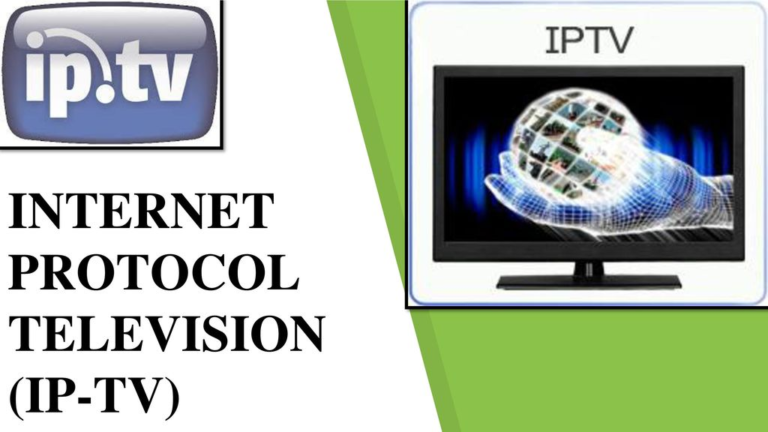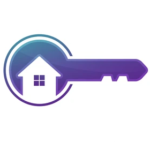ULTRA ELECTRONICS
IPTV & ELV - System and Solutions
Profile
Welcome to ULTRA ELECTRONICS ULTRA ELECTRONICS IPTV & ELV - Systems and Solutions
Here is a profile highlighting the key skills and responsibilities related to the installation and maintenance of IPTV and ELV systems View more
Supply, Installation, Testing, and Commissioning of the entire ELV System
includes the following but is not limited to:
- IPTV System / SMATV Services/ CATV
- CCTV Surveillance & Security System/ IP Surveillance
- Digital Signage
- Public Address System
- Home Automation
- Access Control System/ Fire Alarm System/ Door Access Control
- Information & Communication Systems/ Structured Cabling
- Audio Visual Systems
- AMC Services (Annual Maintenance Contract)
Industry jargon, Terminology and acronyms
What is a Building Management and Controls System
BMS suppliers and integrators
Typical System Components
Typical User Interface Options
Building Management Systems (BMS) also known as Building Automation
Systems (BAS), Building Management and Control System (BMCS), Direct
Digital Controls (DDC) and Building Controls
• Other terms associated with Control Systems include:
– Supervisory, Control and Data Acquisition (SCADA)
– Programmable Logic Controllers (PLC)
– Energy Management System (EMS)
– Data gathering panels (DGP)
– Modbus, Lonworks, and Bacnet – All refer to communications protocols
– ‘Front End’ – legacy term used to refer to the BMS Operator Workstation
• Most Common Current industry term –
– Building Management System (BMS) or
– Building Management and Control Systems (BMCS)
• BMS systems are “Intelligent” microprocessor based controller networks
installed to monitor and control a buildings technical systems and services
such as air conditioning, ventilation, lighting and hydraulics.
• More specifically they link the functionality of individual pieces of building
equipment so that they operate as one complete integrated system.
• Now installed in every major building or facility with the availability of
direct integration into all other building services such as security, access
control, CCTV, fire, Lifts and other life and safety systems.
• Current generation BMS systems are now based on open communications
protocols and are WEB enabled allowing integration of systems from
multiple system vendors and access from anywhere in the world.
User defined menus.
Built into the BMS controller or a
remote device
Password protected
Monitor and control field points,
operating setpoints, time schedules,
alarm management, even trend data
Procured as a complete system that includes, engineering, supply,
installation, programming and commissioning.
• Specialist Integrators that are either directly associated with the
manufacturer or are approved re-sellers.
• All Integrators should have full factory technical support
• Need to work closely with Mechanical Services, Mechanical Electrical and
other contractors.
• For new construction BMS is usually included within the mechanical
services package.
• ‘Tier 1 Company’ only refers to a direct factory association and not to the
quality of products or services…
Can be a basic LCD display through to
full Graphic Operator Workstations.
The Graphic Interface must be
intuitive to use and not require an
Engineering degree to interpret
They must provide sufficient level of
detail to enable the operator to
determine what is happening and
what is going to happen next
Graphics need to provide access to
parameters for tuning and seasonal
information needs to be built into the
system
WEB Server built into a BMS network
controller
User defined menus and graphic
pages
Password protected, multiple access
levels
Monitor and control field points,
operating setpoints, time schedules,
alarm management, even trend data
The role of the BMS in day to day building operation
Building Control Applications
Measuring and Monitoring building performance
Interaction with other building systems
The most common primary function of
the BMS is the control of a buildings
Heating, Ventilation and Air Conditioning
Systems (HVAC) including;
– Air Handling Units
– Chilled Water Plant
– Cooling Towers
– Tenant Condenser Water
– Heating Water Plant
– Exhaust Systems
– Zone Controls
– Computer Room AC
Control of Building Systems and Services
• Graphic User Interface (GUI)
• Real Time Monitoring of Building Operation and Performance
• Trending and Logging of Building Operation and Performance
• Time Scheduling of Building Systems
• Fault Management and Alarming
• Control Application Programming
• User Event Management
• Energy Management and Reporting (NABERS)
• Building control applications include for following:
– Zone temperature monitoring and control
– Zone Variable Air Volume (VAV) control to zones
– Zone CO2 monitoring and control (Air Quality)
– Air handling unit supply air temperature control
– Air handling unit supply air flow / pressure control
– Main Plant Chiller and Boiler sequencing
– Toilet, car park, kitchen and general exhaust fan control
– After Hours Building Control
The advantages of a BMS versus stand alone control
Improved Tenant comfort conditions
Energy Management and reduced operational costs
Management of building ratings such as NABERS
Reduced installation costs
• Flexibility and ease of change
• Customised control strategies
• Scalability
• Operator interaction,
feedback and control
• Integration with other
building services
Real time monitoring of tenant conditions
• Greater load based control strategies
• Trend data of performance, improved fault finding
• Air quality management (CO2)
• After hours operational requests, tenant billing
• Alarm notifications of faults reduce downtime
• Automated change over of failed equipment
Optimal start and stop of plant
• Building warm up and cool down cycles
• Night purge
• Automatic Seasonal plant sequence selection
• Seasonal temperature setting adjustments
• Load based control strategies
• Economy cycle control including CO2
• Equipment runtime monitoring and duty cycling
• Occupancy control and control setback
Can be integrated with Energy Management System (EMS)
• Real time monitoring of energy performance
• Proactive adjustment not retrospective catch up
• Measurement against load profile targets
• Separation of tenant and base building loads
• Historical trend data for NABERS management
• Energy demand and consumption dashboards
• EMS is a dedicated software packed for the monitoring and management of electrical,
water, gas and thermal energy metering systems
Tuning and optimisation
Importance of System Documentation
System Maintenance, what, how often and by whom
Life cycle expectations and considerations
BMS Tuning and Optimisation are not
the same thing….
• BMS Tuning or control loop tuning
ensures that the equipment operates
in a stable, predictable and repeatable
manner.
• Optimisation focuses on operating the
equipment in the most energy efficient
manner without impacting on the
controlled variable
• The first stage of optimisation includes
BMS loop tuning.
Functional Description (FD)
– Details the configuration of the BMS
– Overview of the building services
– Describes in detail each of the BMS control strategies and sequences of
operation
– Documents interaction between each part of the system
• Point Schedules
– Detail all connected devices and their point type
– Critical for planning and system engineering
• Control System Drawings
– Should include a network architecture drawing
– Detail the physical wiring connections to controllers
– Useful for fault finding and establishing spare capacity
The BMS belongs to the building owner who should act as its
administrator managing BMS access rights
• The BMS should be maintained with an appropriate level of servicing
• As with any software driven system, data and files should be backed up on
a regular basis
• Critical components should be identified and checked at regular intervals
• BMS functions such as trend data, reports and alarms can be used to
perform maintenance by exception
• Maintenance should be approached as the performance of the controlled
system not individual components, i.e. AHU or Chiller Plant
• While the BMS equipment vendor should be utilised to maintain the
critical components, other suitably qualified technicians can be utilised for
field equipment
BMS systems are “Intelligent” microprocessor based controller networks
installed to monitor and control a buildings technical systems and services
such as air conditioning, ventilation, lighting and hydraulics.
• Scalable from just one device to thousands of devices
• Link the functionality of individual pieces of building equipment so that
they operate as one complete integrated system.
• Provide the building owners and operators with the tools to manage the
performance and energy efficiency of their buildings
• Can be integrated into all other building services such as security, access
control, CCTV, fire, Lifts and other life and safety systems.
Considerations:
– Check equipment production cycle status
– Select hardware with proven record (avoid beta)
– Check for level of software and hardware support
– Check for forward compatibility policy
• Equipment Lifecycle:
– BMS field controllers – 15 to 20 years
– Field devices – 15 to 20 years
– BMS computer hardware – 3 to 5 years
– BMS software – Major releases 3 to 5 years
Key Responsibilities
- System Design: Collaborate with clients and system integrators to design IPTV and ELV system solutions that meet specific requirements, including access control, video surveillance, fire alarm, audio-visual, and networking components.
- Installation and Configuration: Oversee the installation, cabling, and configuration of IPTV headend equipment, middleware servers, STBs, network switches, cameras, access control devices, and other ELV system components. Ensure compliance with industry standards and local regulations.
- Network Deployment: Configure and optimize the network infrastructure to support IPTV and ELV systems, including routers, switches, firewalls, and network security measures. Implement Quality of Service (QoS) settings to prioritize IPTV traffic.
- Testing and Commissioning: Conduct comprehensive testing of the installed systems to ensure proper functionality, integration, and performance. Verify network connectivity, video and audio quality, access control, and other system features. Commission the systems for full operation.
5. User Training: Provide training to end-users, building operators, and security personnel on how to operate and utilize the IPTV and ELV systems effectively. Train users on system functionalities, user interfaces, troubleshooting procedures, and emergency protocols.
6. Ongoing Maintenance and Support: Perform regular maintenance activities, including equipment inspections, firmware updates, software upgrades, and proactive troubleshooting. Address any issues or malfunctions that arise promptly to minimize downtime. Maintain accurate documentation of maintenance activities.
7. Collaboration and Communication: Collaborate with clients, system integrators, and other stakeholders to ensure effective communication and coordination throughout the installation and maintenance process. Provide technical support and guidance to clients and end-users as needed.
Key Skills and Qualifications
- Strong technical knowledge of IPTV and ELV systems, including access control, video surveillance, fire alarm, audio-visual, networking, and integration principles.
- Proficiency in configuring and troubleshooting IPTV headend equipment, middleware servers, STBs, network switches, and related components.
- Understanding of network infrastructure, IP protocols, and Quality of Service (QoS) requirements for IPTV traffic.
- Knowledge of industry standards and local regulations related to IPTV and ELV systems installation and maintenance.
- Familiarity with relevant software tools and platforms used for system configuration and management.
- Strong problem-solving skills and ability to troubleshoot issues related to hardware, software, and network connectivity.
- Excellent communication and interpersonal skills to work effectively with clients, team members, and end-users.
- Attention to detail, organization, and ability to work independently and as part of a team.
- Relevant certifications or training in IPTV, ELV systems, networking, and security (e.g., CCNA, CPP, CTS) are advantageous.
A professional in the field of IPTV and ELV systems installation and maintenance must stay updated with emerging technologies, industry trends, and best practices. They should possess a customer-focused mindset, ensuring the systems they deploy and maintain meet the unique needs and expectations of clients while adhering to relevant regulations and standards.
CCTV
Home Automation
Time & Attendance Represent
FTTH
IPTV

IPTV – (Internet Protocol Television)
IPTV (Internet Protocol Television) is a digital television broadcasting protocol that delivers television programming and other video content over an IP network. While IPTV has gained popularity in many countries, including India, it is important to note that the availability and implementation of IPTV services may vary depending on the region and service providers. Know More

ELV - Systems (Extra Low Voltage)
ELV stands for Extra-Low Voltage systems, which are an integral part of building infrastructure in India and many other countries. ELV systems encompass various low-voltage electrical and electronic systems used for different purposes within a building. These systems are typically designed to enhance safety, security, communication, and automation. Here are some common ELV systems implemented in India: Know More
Our Esteemed Clients


















